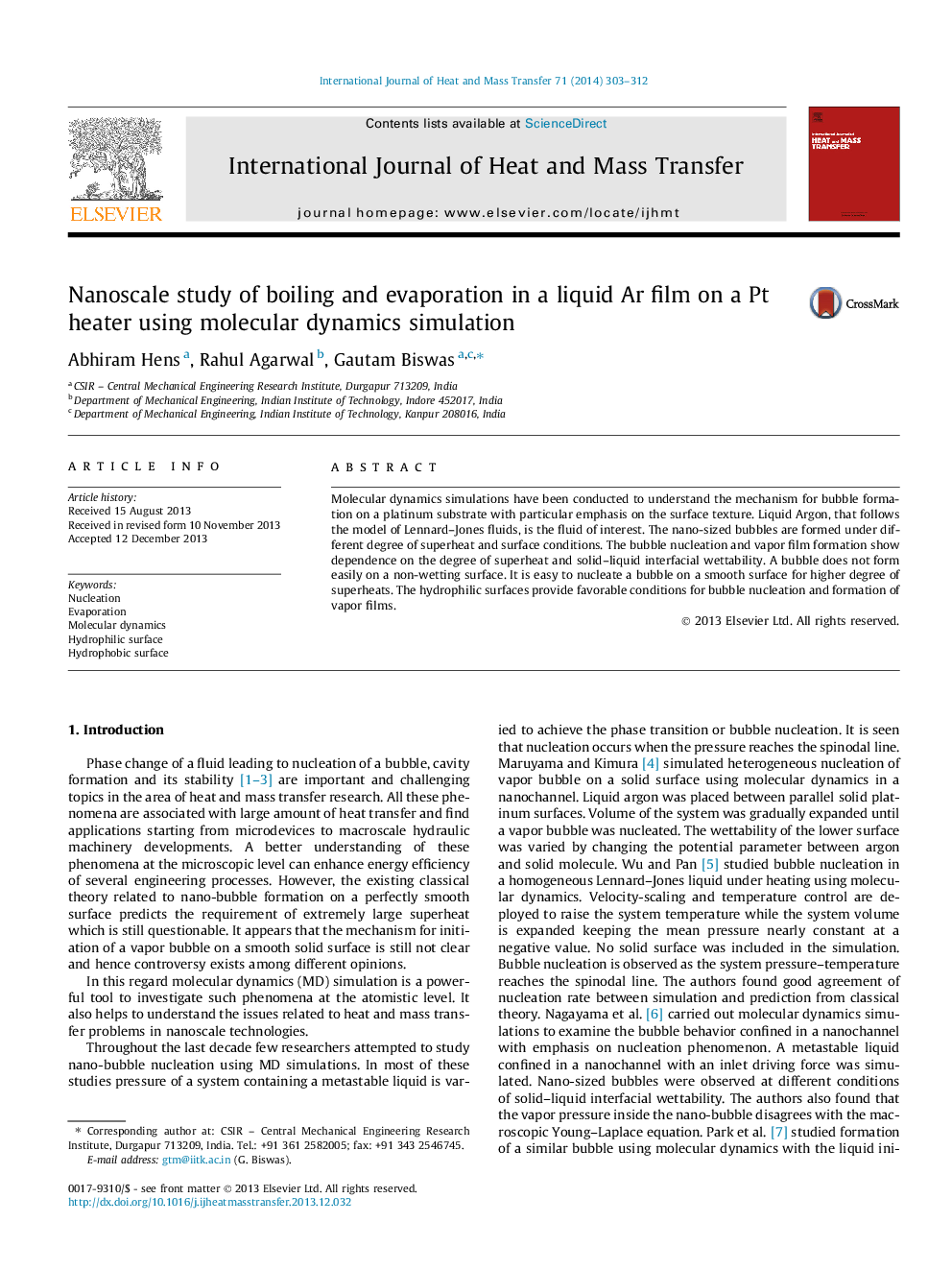| Article ID | Journal | Published Year | Pages | File Type |
|---|---|---|---|---|
| 7057594 | International Journal of Heat and Mass Transfer | 2014 | 10 Pages |
Abstract
Molecular dynamics simulations have been conducted to understand the mechanism for bubble formation on a platinum substrate with particular emphasis on the surface texture. Liquid Argon, that follows the model of Lennard-Jones fluids, is the fluid of interest. The nano-sized bubbles are formed under different degree of superheat and surface conditions. The bubble nucleation and vapor film formation show dependence on the degree of superheat and solid-liquid interfacial wettability. A bubble does not form easily on a non-wetting surface. It is easy to nucleate a bubble on a smooth surface for higher degree of superheats. The hydrophilic surfaces provide favorable conditions for bubble nucleation and formation of vapor films.
Related Topics
Physical Sciences and Engineering
Chemical Engineering
Fluid Flow and Transfer Processes
Authors
Abhiram Hens, Rahul Agarwal, Gautam Biswas,
